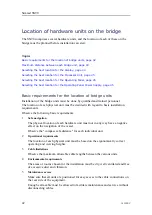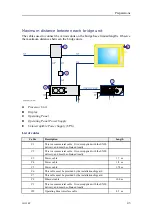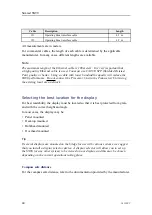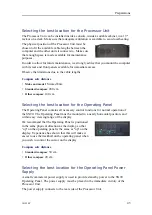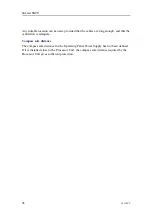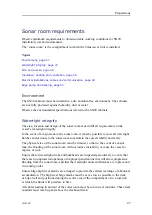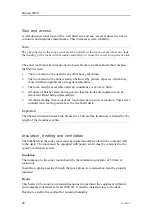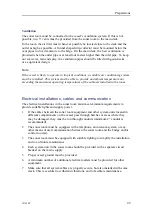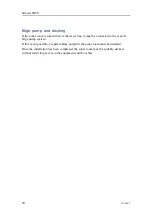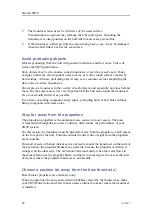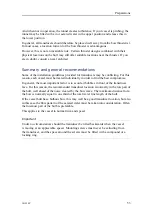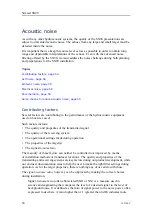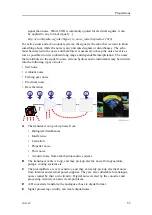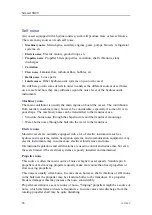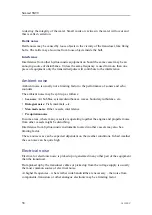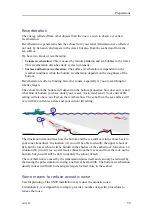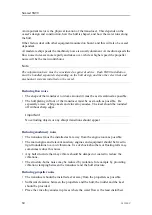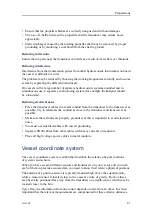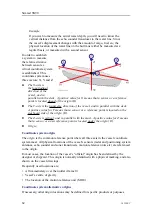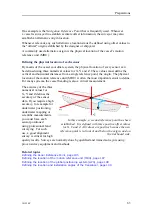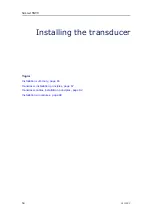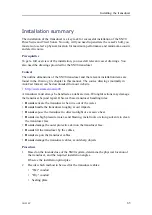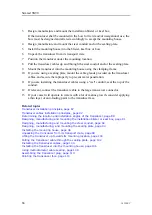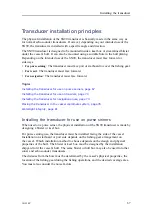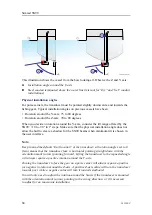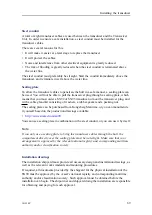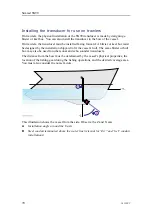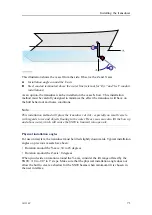
56
381298/C
Self noise
Any vessel equipped with a hydroacoustic system will produce more or less self noise.
There are many sources of such self noise.
•
Machinery noise
: Main engine, auxiliary engines, gears, pumps, blowers, refrigerator
systems, etc.
•
Electric noise
: Electric motors, ground loops, etc
•
Propeller noise
: Propeller blade properties, cavitation, shaft vibrations, static
discharges
•
Cavitation
•
Flow noise
: Laminar flow, turbulent flow, bubbles, etc
•
Rattle noise
: Loose parts
•
Interferences
: Other hydroacoustic systems on your own vessel
We will here go into some details in order to analyse the different sources of self noise
on a vessel and how they may influence upon the noise level of the hydroacoustic
instruments.
Machinery noise
The main contributor is usually the main engine on board the vessel. The contribution
from auxiliary machinery may, however, be considerable, especially if some of it is in
poor shape. The machinery noise can be transmitted to the transducer as a:
• Structure-borne noise through the ship structure and the transducer mountings
• Water-borne noise through the hull into the water to the transducer
Electric noise
Modern vessels are normally equipped with a lot of electric instruments such as
hydroacoustic systems, radars, navigation systems, and communication equipment. Any
electric instruments may in some cause electrical interference and noise.
International regulations and certifications are used to control and reduce this, but even
these are limited if the electrical systems are poorly installed and maintained.
Propeller noise
This source is often the main source of noise at higher vessel speeds. Variable pitch
propellers or fast moving propellers usually make more noise than fixed propellers or
slow moving propellers.
This noise is usually water-borne. In some cases, however, shaft vibrations or vibrations
in the hull near the propeller may be structure-borne to the transducer. If a propeller
blade is damaged, this may increase the noise considerably.
Propeller cavitation is a severe source of noise. "Singing" propellers might be a source of
noise, which interferes at discrete frequencies. In some cases static discharge from the
rotating propeller shaft may be quite disturbing.
Simrad SN90
Summary of Contents for Simrad SN90
Page 2: ......
Page 117: ...381298 C 115 Related topics Installation summary page 65 Installing the transducer ...
Page 236: ...234 381298 C 372915 Clamping frame Simrad SN90 ...
Page 295: ......
Page 296: ... 2016Kongsberg Maritime ISBN 978 82 8066 179 1 ...
Page 297: ......

